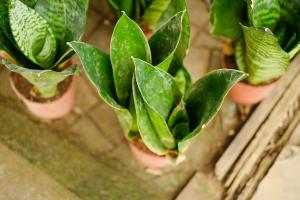Appearance of Asparagus Plant
Asparagus plants are a unique and attractive addition to any garden or landscape. These perennial plants have tall, feathery green foliage and produce edible shoots that are a delicious and healthy addition to any meal. Here's a closer look at what an asparagus plant looks like.
Foliage
The foliage of an asparagus plant is perhaps its most distinguishing feature. The leaves and stems of the plant are bright green and covered in tiny, needle-like leaves that give the plant a delicate appearance. The stems can grow quite tall, reaching up to five feet in height, and are topped with feathery plumes that resemble miniature trees.
The foliage of an asparagus plant is also quite dense, making it an excellent choice for use as a screening plant or for creating a natural privacy barrier. The dense foliage also makes it an effective windbreak, helping to protect other plants in the garden from damage caused by strong winds.
Root System
Beneath the surface, the root system of an asparagus plant is quite impressive. The roots are large and fleshy, forming the base of the plant's strong and sturdy structure. Asparagus plants have a deep root system that can reach down several feet into the soil, making them able to withstand drought and other harsh growing conditions.
The fleshy roots of the asparagus plant are also what allow it to survive through the winter months. The roots store nutrients during the growing season, providing the plant with the energy it needs to sprout new shoots the following spring. It's important to keep the soil around the roots moist during the growing season, to ensure that the plant has access to the water it needs to thrive.
Shoots
Of course, one of the most recognizable features of the asparagus plant are the edible shoots that it produces. These shoots are typically harvested in the spring, as they emerge from the ground as small, tender spears.
As the shoots grow, they begin to elongate and develop into the full, feathery foliage that is characteristic of the plant. While the shoots are tender and delicious when they are young, they quickly become tough and woody as they mature. It's important to harvest the shoots at the right time, to ensure that they are as tasty and tender as possible.
Conclusion
In summary, the asparagus plant is a stunning and unique addition to any garden or landscape. With its tall, feathery foliage, deep and robust root system, and delicious edible shoots, there's a lot to love about this versatile and hardy perennial.
Whether you're looking to add some natural privacy to your yard, create a windbreak, harvest your own asparagus spears, or simply enjoy the beauty of this lovely plant, consider adding an asparagus plant to your outdoor space.

 how many times do yo...
how many times do yo... how many planted tre...
how many planted tre... how many pine trees ...
how many pine trees ... how many pecan trees...
how many pecan trees... how many plants comp...
how many plants comp... how many plants can ...
how many plants can ... how many plants and ...
how many plants and ... how many pepper plan...
how many pepper plan...





























